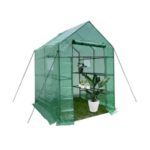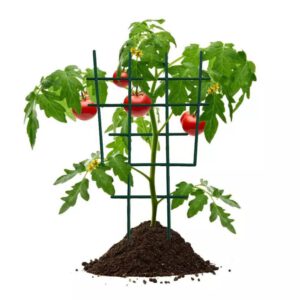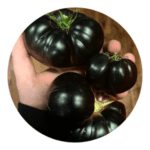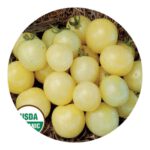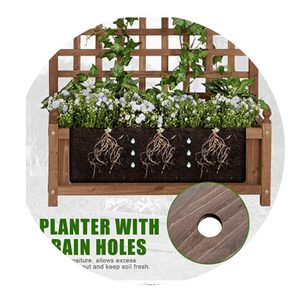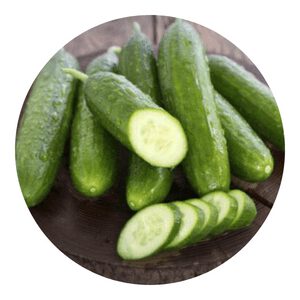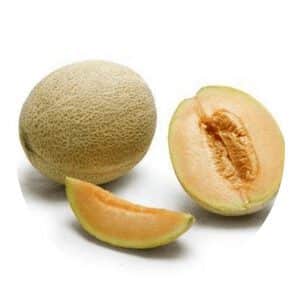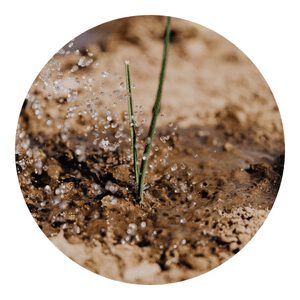How to grow organic Tomato
If you’re looking to grow your own tomatoes this year, there are a few things you’ll need to know.
Tomato Menu
The benefits of growing organic tomatoes
Organic tomatoes are not grown with the use of synthetic fertilizers, pesticides, or herbicides.
For many people, this is reason enough to choose organic tomatoes over their conventional counterparts. But there are other reasons to grow organic tomatoes, too.
Organic tomatoes are often thought to be more flavorful than conventionally grown tomatoes.
This may be due to the fact that organically grown plants are allowed to ripen on the vine, whereas conventionally grown tomatoes are often picked prematurely so they can withstand the rigors of shipping.
Organic tomatoes also contain higher levels of antioxidants than conventionally grown tomatoes.
These antioxidants help protect against cell damage and may help reduce the risk of some types of cancer.
Preparing the soil
How to prepare the soil for tomato plants.
Before planting tomatoes, the soil should be prepared by removing any debris, rocks, or weeds.
The soil should then be amended with compost or manure to improve its fertility and structure. If the soil is low in nitrogen, a fertilizer such as ammonium sulfate can be added.
Finally, the soil should be pH-tested and corrected if necessary.
Add organic matter
Add fertilizer
Till the soil
Add compost
Create raised beds
Planting and caring for the plants
In order to have a successful tomato garden, there are a few things you need to do before planting your tomatoes.
The first step is to till the soil in your garden. This will loosen the dirt and help the roots of the plants grow deep into the ground. Once the soil is tilled, you can add some organic matter to it. This will help keep the soil healthy and provide nutrients for the plants.
Next, you need to dig planting holes that are about twice as wide as the pots your tomatoes came in and just as deep. Remove the plants from their pots and place them in the holes, making sure that the roots are spread out evenly.
Fill in around the plants with soil, making sure not to cover up the tops of the plant’s leaves.
Water generously after planting and continue to water regularly, especially during times of drought.
Harvesting and storing the tomatoes
Tomatoes are a popular garden vegetable because they are relatively easy to grow and the fruits are versatile in the kitchen.
Tomatoes can be eaten fresh or cooked. There are many varieties of tomatoes, including heirloom tomatoes, which are open-pollinated.
Heirlooms have been around for many years and have been passed down from generation to generation.
Tomatoes should be harvested when they are ripe.
The best way to determine if a tomato is ripe is to check the color. Ripe tomatoes will be a deep red or orange color.
Another way to tell if a tomato is ripe is to feel the fruit.
Ripe tomatoes will be soft, while unripe tomatoes will be firm.
Tomatoes can be stored in the refrigerator for several days or they can be frozen for later use.
Start your organic tomato journey today And avoid those harmful chemicals Your results will be so much better And you'll feel great about yourself, too There's nothing like a homegrown tomato Grown with your own two hands Organic and free of chemicals The taste will make you smile So start your tomato plants today And enjoy the fruits of your labor
Chappy The Gardener
Tomato varieties
There are many different types of tomatoes, each with their own unique flavor and characteristics.
Here are a few of the most popular varieties:
What is the best organic fertilizer for tomatoes?
Organic fertilizers are becoming increasingly popular as more and more gardeners attempt to grow tomatoes without the use of synthetic chemicals.
But with so many organic fertilizers on the market, it can be difficult to know which one is best for tomatoes.
Some of the most popular organic fertilizers for tomatoes include manure, compost, and bone meal.
Manure is a great source of nutrients for tomatoes and can be applied directly to the soil around the plants.
Compost is another excellent option for tomato fertilizer, as it provides a slow release of nutrients that will help keep your plants healthy all season long.
Bone meal is a third option that provides phosphorus, which is essential for tomato growth.
When choosing an organic fertilizer for your tomatoes, it is important to consider the specific needs of your plants.
Composting
In order to produce healthy and flavorful tomatoes, gardeners need to provide their plants with the appropriate nutrients.
One of the best ways to do this is by using composted organic fertilizer.
Composting is the process of breaking down organic matter into a nutrient-rich soil amendment. This can be done by using a compost bin or pile, or by vermicomposting (using worms to break down the organic matter).
The end result is a rich, dark brown material that can be used as a soil amendment or topdressing for gardens and landscapes.
Tomatoes are heavy feeders and require high levels of nitrogen, phosphorus, and potassium.
Composted organic fertilizer provides these essential nutrients in a slow-release form that helps to maintain healthy plants and prevent nutrient deficiencies.
Manure
Manure provides essential nutrients that tomatoes need to grow and produce fruit.
It also helps improve the soil structure, making it easier for roots to penetrate and absorb water and nutrients.
Manure is an excellent organic fertilizer for tomatoes because it contains high levels of nitrogen, phosphorus, and potassium – all of which are essential nutrients for plant growth. It also contains beneficial microorganisms that help improve soil health.
When using manure as a fertilizer, it’s important to choose a type that is well-rotted and aged.
Fresh manure can contain harmful bacteria that can damage plants.
Manure should be applied to the soil around tomato plants before planting, or incorporated into the soil several weeks before planting.
Epsom salt
Organic gardening enthusiasts swear by the benefits of Epsom salt as an organic fertilizer for tomatoes.
Epsom salt is magnesium sulfate, a mineral that is beneficial to plant growth. It is available at most grocery stores and pharmacies.
To make a fertilizer solution, dissolve one pound of Epsom salt in one gallon of water.
Spray this solution on your tomato plants every two weeks. The magnesium in Epsom salt will help to produce sturdy plants with plenty of fruit.
The sulfate will help to fight off diseases.
Boron
One of the most popular organic fertilizers is Boron.
Boron is a micronutrient that is essential for the growth of tomatoes. Tomato plants need Boron for cell division, fruit development, and to prevent blossom end rot.
Boron is not found in all soils, so it is important to test your soil before planting tomatoes. If your soil is deficient in Boron, you can add Boron to the soil by using an organic fertilizer.
There are many different brands of organic Boron fertilizer available on the market.
When choosing an organic Boron fertilizer, it is important to choose one that has a high concentration of Boron.
It is also important to choose a fertilizer that is approved for use on organic farms.
Sulphur
Sulphur is an important nutrient for tomatoes and other vegetables.
Sulphur helps the plant to better absorb phosphorus and nitrogen, which are essential nutrients for plant growth. One way to add sulphur to your soil is to use a sulphur organic fertilizer.
Sulphur organic fertilizers are made from animal manure, agricultural waste, or composted vegetable matter.
The most common ingredients in sulphur organic fertilizers are chicken manure and bonemeal. These fertilizers help to improve the structure and fertility of the soil. They also help to suppress plant diseases and pests.
When using a sulphur organic fertilizer, it is important to follow the instructions on the package.
Different fertilizers have different ratios of nitrogen, phosphorus, and potassium.
How long does it take to grow tomatoes?
Tomatoes are a fast-growing crop, and can be ready for harvest in as little as 60 days.
However, the average tomato plant takes around 80 days to mature fully. If you start your plants from seed, you can expect them to take about 6-8 weeks before they are ready to transplant into the ground.
Once your plants are in the ground, they will need about 1-2 inches of water per week.
Be sure not to over or underwater your plants, as this can l ead to problems with fruit production later on.
After about 60 days, your plants should start producing fruit.
How many tomatoes do you get per plant?
When it comes to tomatoes, there are two types of gardeners: those who get a ton of tomatoes per plant, and those who don’t. If you’re in the latter group, don’t despair.
There are a few things you can do to increase your tomato yield.
First, make sure you’re planting a variety that is known for being high-yielding. Second, give your plants plenty of space to grow – at least 2 feet apart. Third, water them regularly and deeply, especially during dry periods.
With these tips in mind, you should be able to get a good number of tomatoes from each plant – even if you’re not one of the lucky ones who gets an abundance naturally!
So, how many tomatoes can you expect from your plant?
If you have a determinate variety, you may get around 6-10 tomatoes per plant. Indeterminate varieties can yield 12-18 tomatoes or more per plant.
What is the best month to plant tomatoes?
Although you can technically plant tomatoes year-round in many parts of the country, spring is really the best time to start your crop.
That’s because, in order to produce a bountiful harvest, tomatoes need about six to eight weeks of warm weather—and that’s usually not something you find in late fall and winter.
If you live in a climate with long, hot summers (like much of the South), you can plant your tomatoes as early as March or April.
But if you have shorter summers, or if your region is prone to early frosts, wait until May or even June to sow your seeds.
Whenever you plant them, make sure to choose a sunny spot in your garden with well-drained soil.
Can you grow tomatoes hydroponically?
Yes, tomatoes can be grown hydroponically with great success.
Hydroponic tomato production offers many advantages over traditional soil-based methods, including increased yields, reduced pest and disease pressure, and year-round production.
Hydroponic tomatoes are grown in a nutrient-rich water solution, rather than in soil.
This allows the roots to access the nutrients they need more easily, resulting in healthier plants and higher yields.
Additionally, hydroponics can be used to control pests and diseases more effectively than traditional methods.
If you’re interested in growing tomatoes hydroponically, there are a few things you’ll need to get started.
First, you’ll need a growing container, like a plastic bucket or barrel.
Next, you’ll need an aeration system to keep the roots healthy.
Finally, you’ll need a source of light for your plants.
Can you grow tomato in a greenhouse?
The greenhouse is an excellent option for those looking to grow organic tomatoes.
With a controlled environment, the greenhouse can provide the perfect conditions for tomato plants to flourish.
Here are a few things to keep in mind when growing tomatoes in a greenhouse:
1. Make sure the greenhouse has plenty of ventilation. Tomato plants need fresh air to thrive, and a well-ventilated greenhouse will ensure that they get it.
2. Keep an eye on temperature and humidity levels. Both of these factors can have a big impact on tomato plants, so it’s important to monitor them closely.
3. Provide ample light. Tomato plants need lots of sunlight to produce bountiful fruit, so make sure the greenhouse gets plenty of light during the day.
With these tips in mind, you’re well on your way to success when growing tomatoes in a greenhouse!
Can you grow tomato in a pot or raised beds?
Organic tomatoes can be grown in a pot or raised beds. There are a few things to consider when growing organic tomatoes in a pot or raised bed.
The first is the size of the pot or raised bed.
The second is the type of soil. The third is the type of tomato plant.
The size of the pot or raised bed will determine how many tomato plants can be grown. Tomato plants need room to grow and produce fruit. If the pot or raised bed is too small, the plants will not have enough room to grow and produce fruit.
The type of soil is important for growing organic tomatoes. Tomato plants need well-drained, fertile soil to grow and produce fruit. If the soil is too sandy, clayey, or rocky, the plants will not be able to get the nutrients they need to grow and produce fruit.
Can you grow tomato aquaponics
You betcha!
Aquaponics is a great way to grow organic tomatoes.
Here are a few tips to get you started:
1. Start with a good quality tomato seedling. Look for one that is disease resistant and has been grown organically.
2. Set up your aquaponics system so that the roots of the tomato plant are in direct contact with the water. This will ensure that the plant gets enough nutrients.
3. Make sure the water temperature is warm enough for the tomato plant to thrive. Tomatoes like it around 75 degrees Fahrenheit.
4. Provide adequate lighting for your plants. Tomato plants need at least 8 hours of sunlight per day. If you are growing them indoors, use grow lights to give them the light they need.
Can you grow a tomato plant indoors?
Tomatoes are one of the most popular vegetables to grow, and with good reason. They’re relatively easy to grow, and they produce a bountiful crop.
But what if you don’t have a lot of space for a garden, or if you live in an apartment? Can you grow tomatoes indoors?
Yes, you can! Growing tomatoes indoors is a great way to get your tomato fix if you don’t have a lot of space.
There are a few things to keep in mind when growing tomatoes indoors, though.
First, choose a variety of tomato that is suited for indoor growing.
Second, make sure you have a sunny spot for your plants.
And third, water regularly and fertilize according to the instructions on the fertilizer package.
With a little care, you can successfully grow tomatoes indoors.
Necessary supplies and tools for growing organic tomatoes
When growing organic tomatoes, there are a few supplies and tools you will need.
The first is soil. You can either use a pre-made organic potting mix or make your own by combining equal parts of compost, peat moss, and vermiculite.
Be sure to choose a pot that has drainage holes in the bottom so the soil can dry out between waterings.
You will also need a tomato plant, stakes or poles to support the plant, and twine or wire to tie the plant to the stakes/poles.
Finally, you will need regular watering and fertilizing to ensure healthy growth.
Soil
Soil is incredibly important for growing tomatoes. The best soil for tomatoes will be loose, rich in organic matter, and have a pH of 6.5 to 7.0.
If your soil is not ideal, you can amend it with compost, manure, or other organic matter to make it more hospitable to tomatoes.
You can also add lime to raise the pH or sulfur to lower it.
Organic Fertilizer
Organic fertilizers are made from natural materials. They are often slow-release, which means they provide nutrients to plants over a period of time.
This is beneficial because it prevents plants from being over-fertilized, which can damage them.
Organic fertilizers also improve soil quality over time.
One type of organic fertilizer is made from composted manure.
Composted manure is created by composting animal waste along with bedding, food scraps, and other organic materials. The mixture is then turned regularly to allow for aerobic decomposition. This process produces heat, which helps kill harmful pathogens and pests.
Composted manure is high in nitrogen, phosphorus, and potassium—the three primary nutrients that tomatoes need for healthy growth.
It also contains micronutrients such as magnesium and copper, which are essential for plant health.
Mulch
Mulching is an important part of growing tomatoes. The best time to mulch is after the soil has warmed up and the danger of frost has past.
Mulching helps to retain moisture in the soil, keeps the roots cool, and can reduce weed growth.
There are many different types of mulch that can be used, such as straw, hay, leaves, pine needles, or bark.
In conclusion,growing organic tomatoes is a great way to get fresh, delicious, and healthy tomatoes. It is also a great way to support local farmers and the environment.
If you are looking for a way to get involved in the local food movement, growing organic tomatoes is a great place to start.
Click To Grow
Helps Us Grow – Share If You Like



